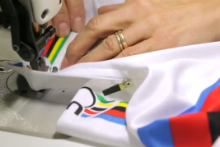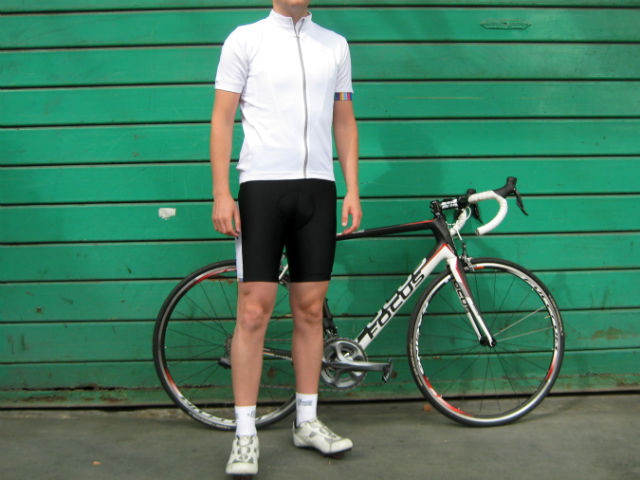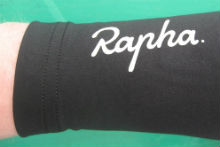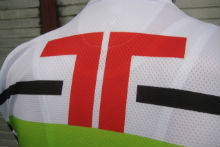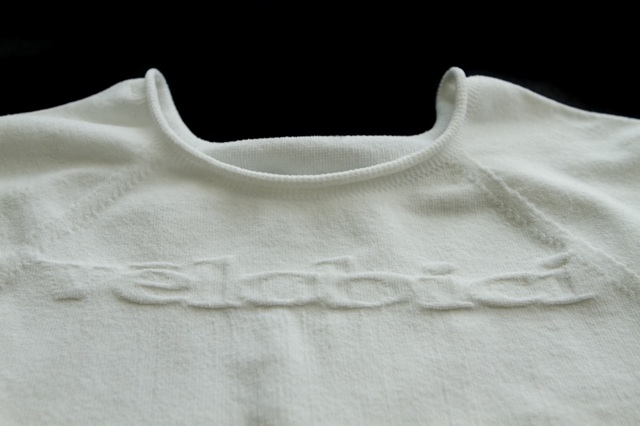Cycle clothing that cools and insulates remains the grail for riders and clothing manufacturers alike.
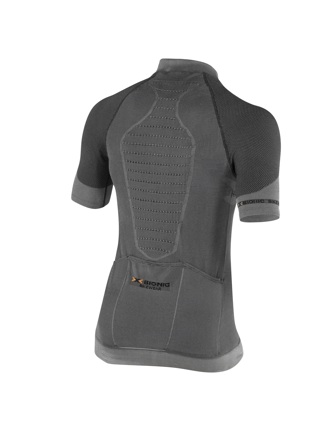
Here’s a different approach from Swiss manufacturer, X-BIONIC, supplier of liner fabric to helmet manufacturer, Giro, and base layers to Cadel Evans.
The garments, cut and sewn in Italy, are designed to regulate core body temperature, a task X-BIONIC claim accounts for 90 per cent of the body’s energy usage when operating at peak performance.
At the heart of the company’s design philosophy is the belief that jerseys that wick sweat to the outside of the garment to evaporate work against the body’s natural cooling method, leaving you dehydrated and wearing soggy garments.
They argue that sweat is designed to evaporate from the skin, a process they say cools the blood flowing through capillaries immediately beneath the skin, and not to be wicked away from it.
To that end, their garments are sewn with a series of channels that allow air to flow across the skin, leaving “an undetectable micro film of sweat on the skin”. This process, they claim, works in harmony with the body’s natural cooling system, helping it to retain an optimum temperature of 37 degrees while working and using the same air channels for insulation during the recovery period.
Upper body (jerseys, base layers, upper area of bibs, rear of gilet)
The upper body kit (jerseys, base layers, upper part of bibs, rear of gilet) contains panels known to X-BIONIC as the “3D-Bionicsphere” (really) in the centre of the back, between the shoulder blades, and in the armpits and chest. The panels are tailored with ridges that act as air-filled pipes, lifting the fabric away from the skin, allowing the sweat to evaporate, rather than attempting to wick it through the garment to the outside world.
Lower body (bib shorts and tights)
Different panels are used in the various areas of leg wear, although each have the ridged “3D Bionic sphere” panel in the back. Insulation is provided on thighs and knees, while a fine mesh panel is used to cover parts of the leg not so exposed to the wind (the inner thigh and area behind the knee) for cooling. The pad is constructed in a honeycomb structure and also contains the channels that define much of the range. The garments are seamless (produced on machines used to make socks, apparently) and with different density of material in separate areas, unlike the “same-everywhere” treatment of traditional lycra.
Outer layer
X-BIONIC claim to have cracked the “boil in the bag” phenomenon of fabrics marketed as breathable that rely on tiny holes to release moisture, but fail when the holes are blocked by sweat, road debris, and rain on the outside of the jacket. Instead of holes, X-BIONIC use a fabric lined with tiny hairs (the “symbionic membrane” no less) which they claim breaks the water’s surface tension as it attempts to condense on the inside of the fabric, allowing it to pass through to the outside of the garment.
There’s a lot of interesting concepts here, and a host of awards, including the Plus X Award, awarded in its various sub-categories to, among others, BMW for its i3 concept car, and Apple for the iPad2. Impressive stuff, but until we’ve tried it, we’ll reserve judgment. Watch this space.

